台式电脑的分析
日期:2012-06-19
FLOTHERM Analysis of a Desktop Computer |
|
Results
Here are some result from the analysis. The peak temperature in the heat sink is about 85癈 and the temperature of the processor die is about 104癈 (see below). The cooling system seems to be working as planned. Or is it?
This view shows the air flow vectors and the temperature field on a plane through the center of the package. The most noticeable effect is that the component and the socket are so high that they block all the flow from the lower part of the fan annulus and force much of the cooling air up to the roof of the enclosure where it can do little good.
Now take a closer look at the velocity vectors in the plane of the processor center line. These show a curious effect. Because the fan generated cooling flow on the center-line of the package is being deflected upwards, the flow through the heatsink on this plane is actually going backward! Fortunately, the flow from the sides of the fan penetrates the heat sink fins and is sufficient to cool the processor, so things are still under control.
If this designer had taken the time to analyze the design before building it, it might have been possible to:
|








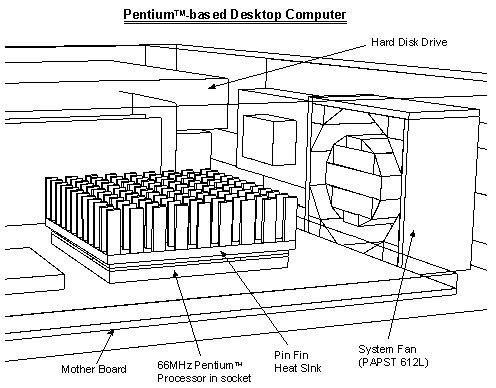
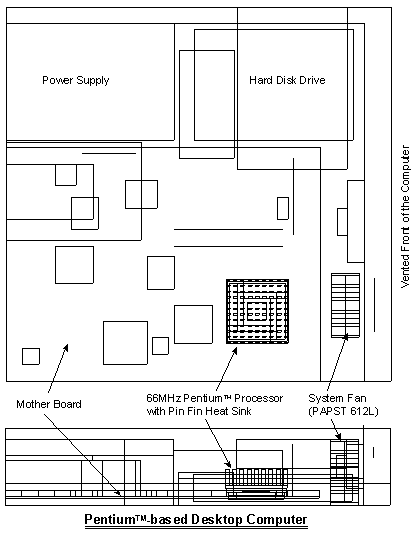
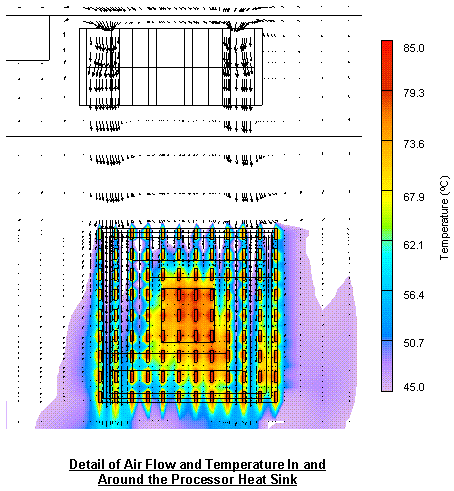
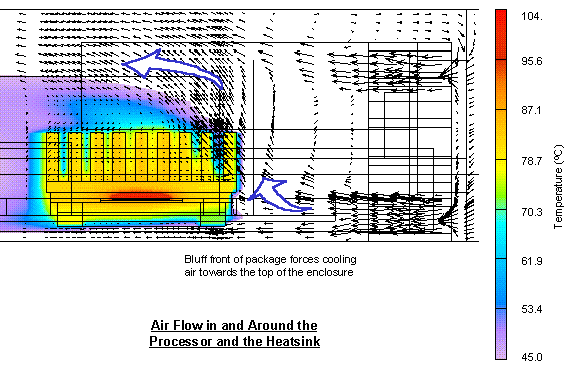
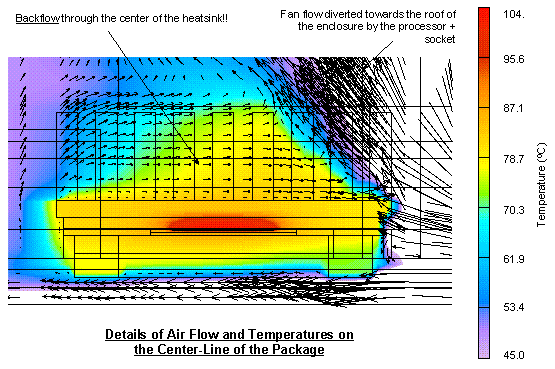
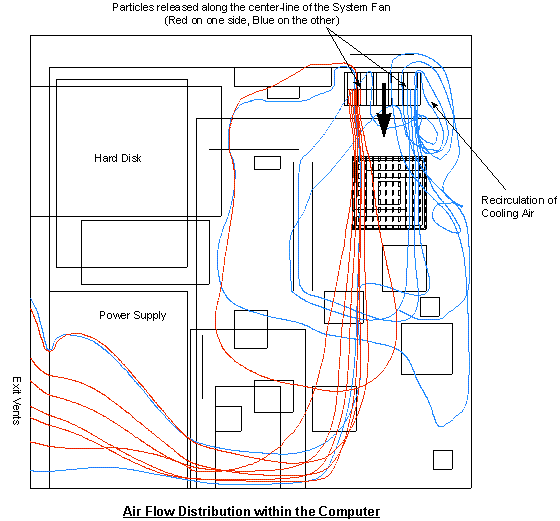

 沪公网安备 31010602003953号
沪公网安备 31010602003953号